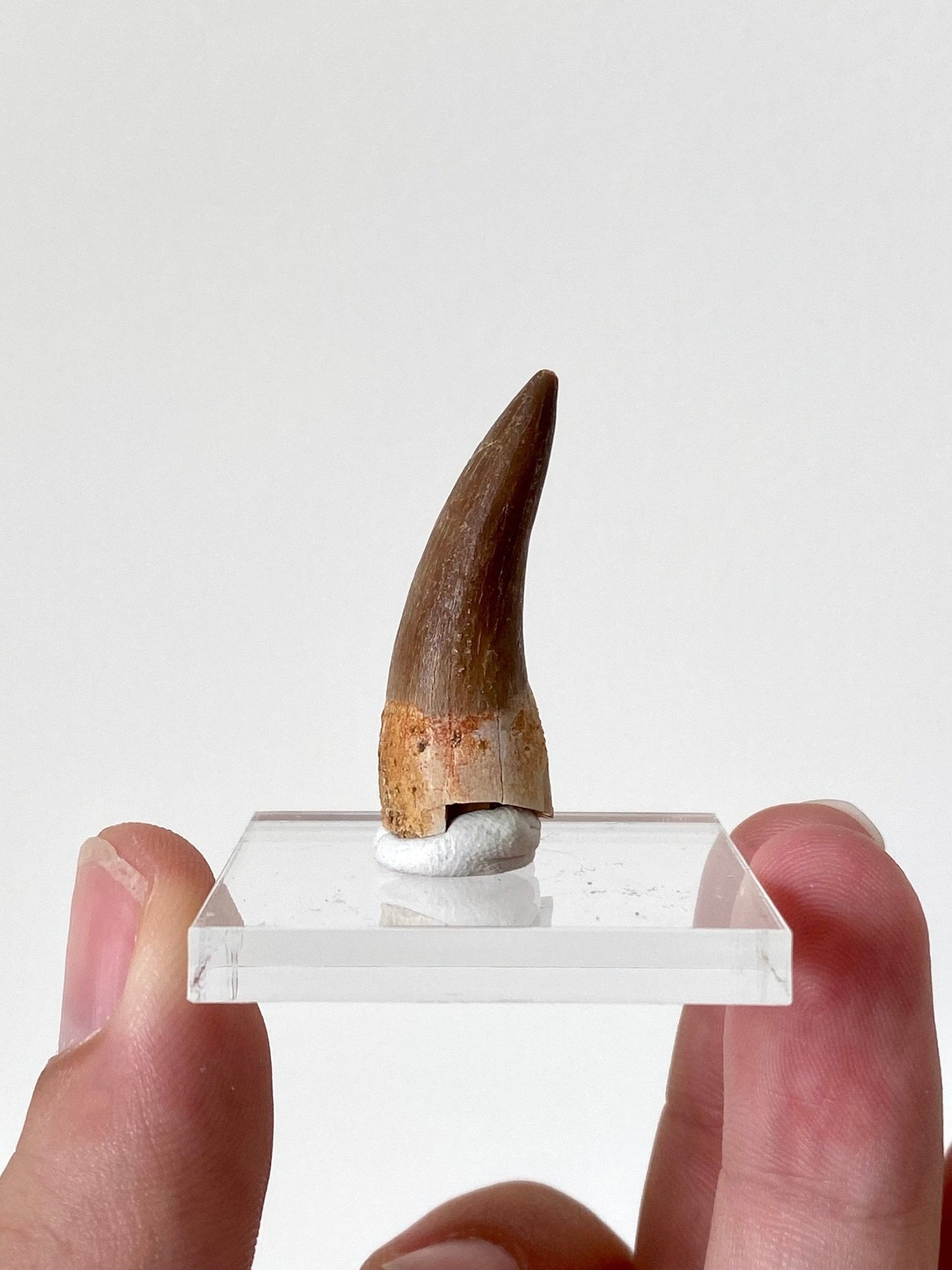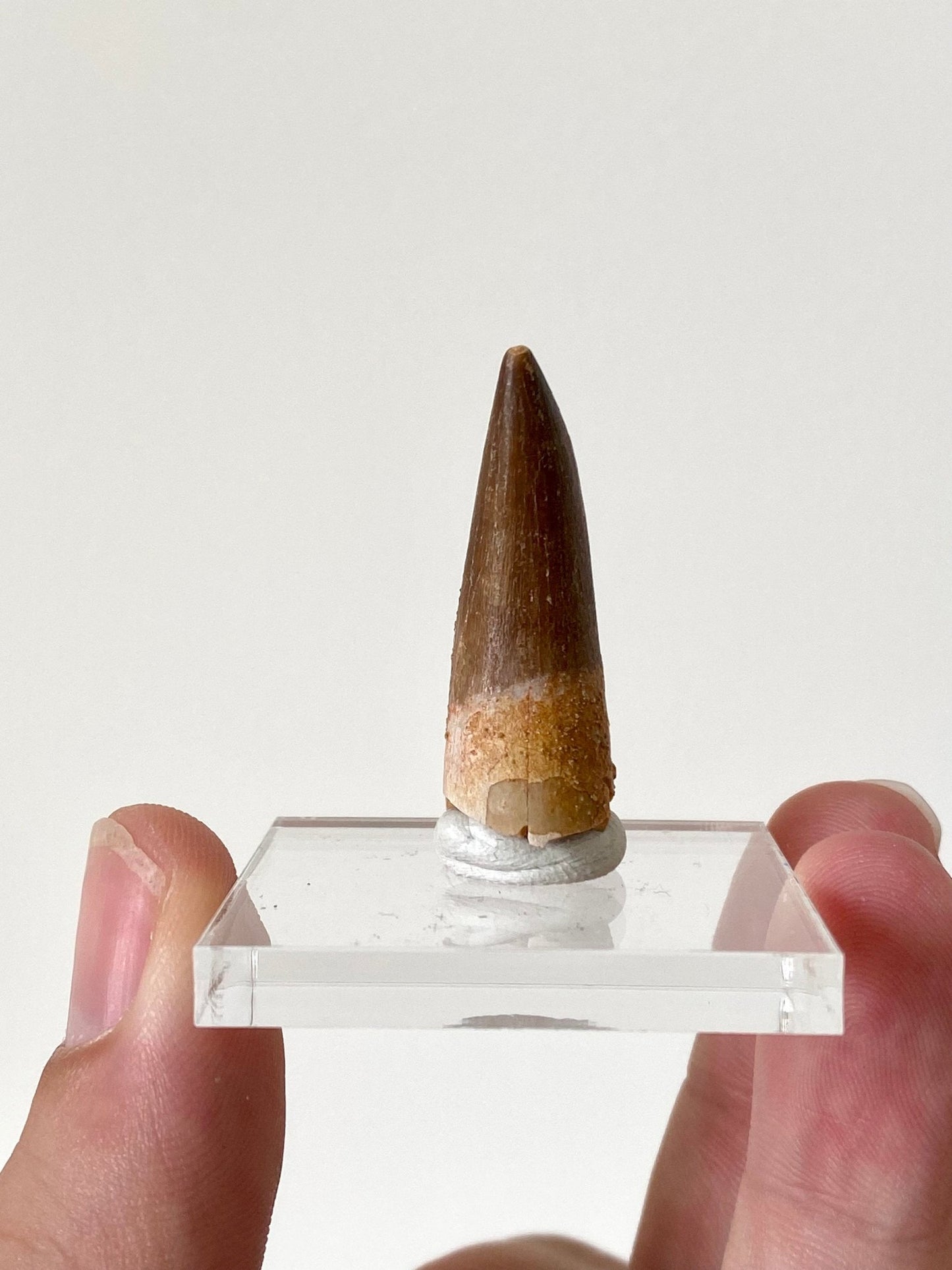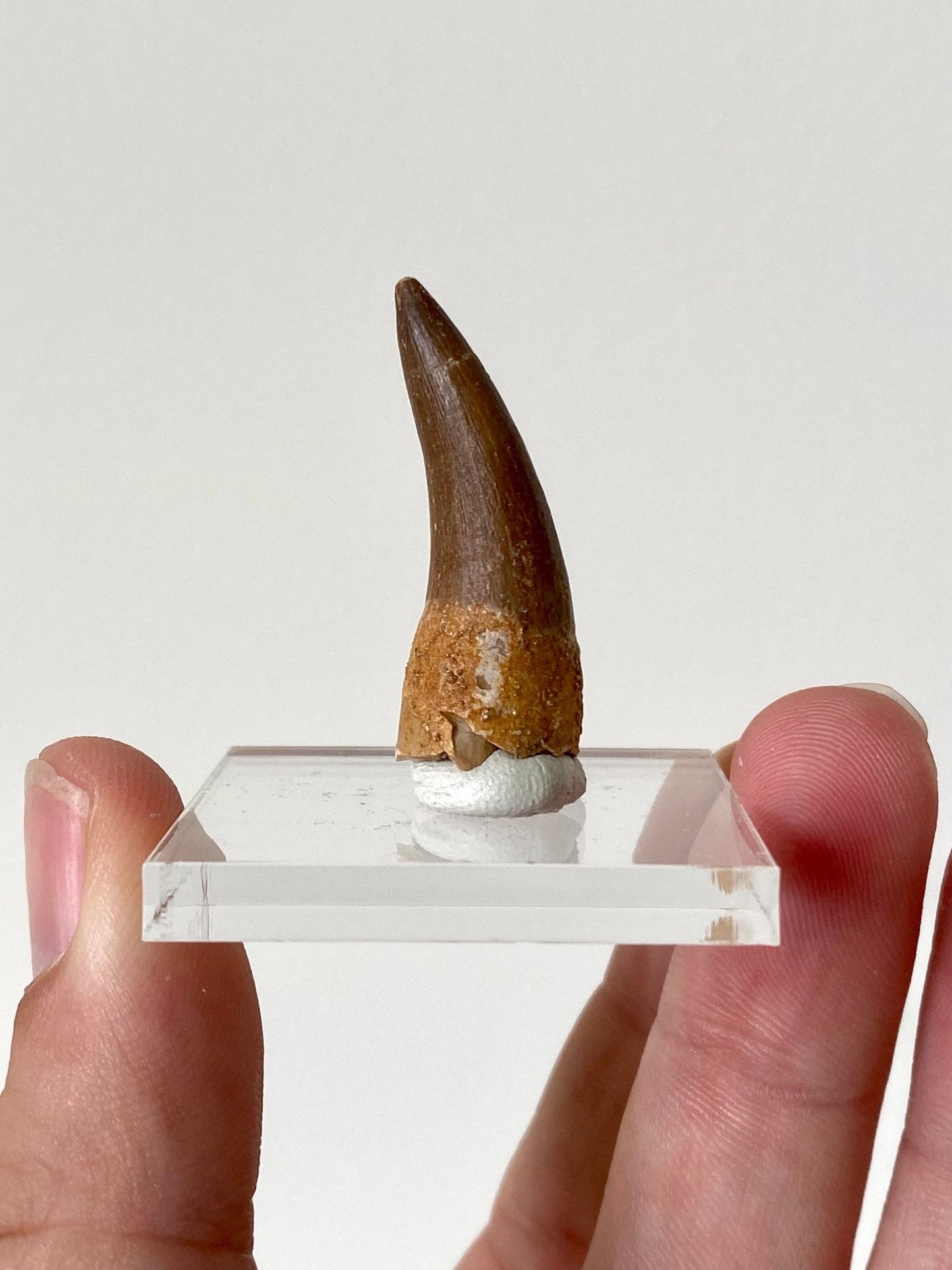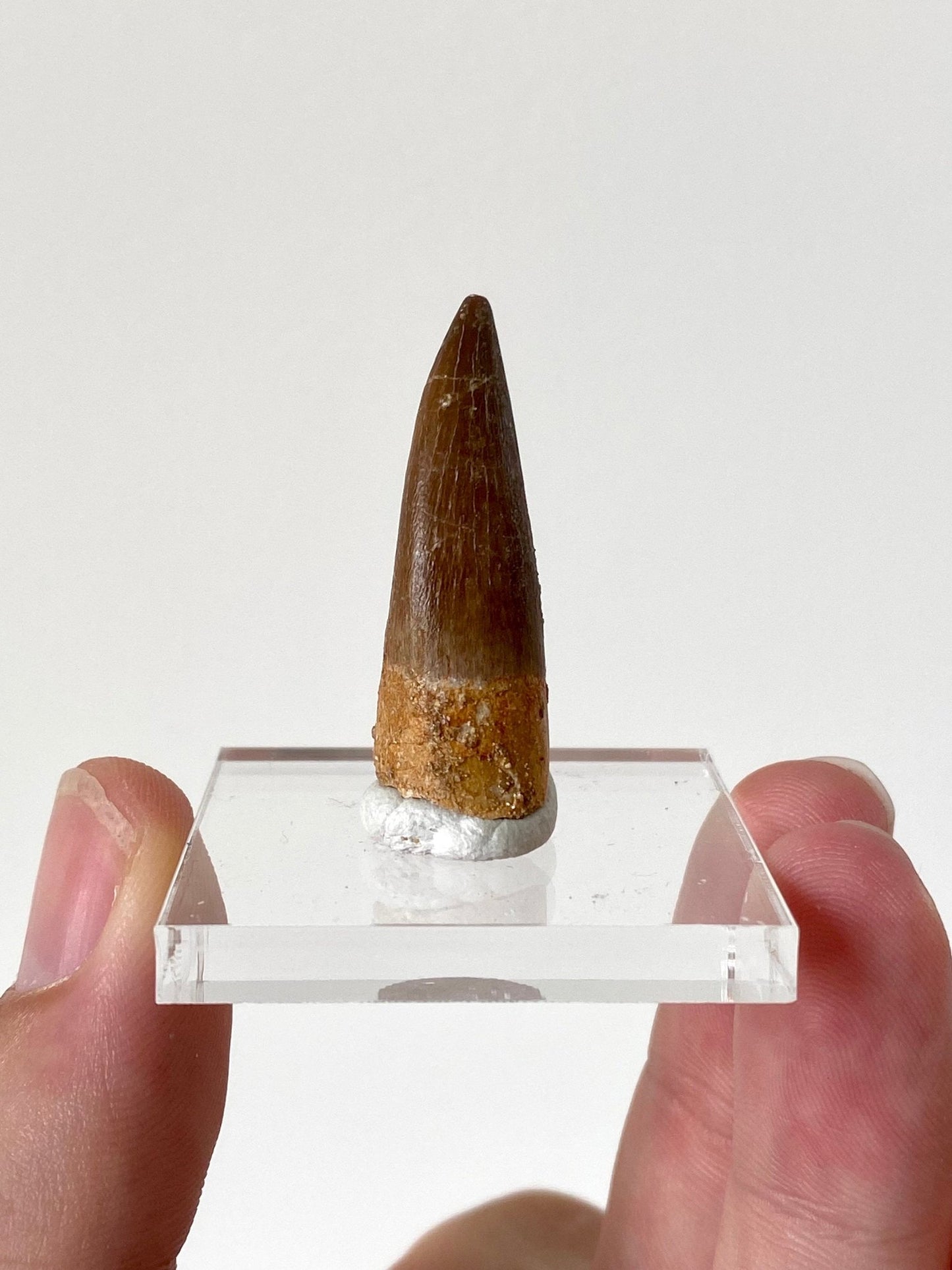NaN
/
of
-Infinity
Plesiosaurus fossil tooth (3.6cm)
Plesiosaurus fossil tooth (3.6cm)
Regular price
€26,95 EUR
Regular price
Sale price
€26,95 EUR
Unit price
/
per
Tax included.
Shipping calculated at checkout.
Couldn't load pickup availability
Shipping rates & times
Shipping rates & times
| Destination | # days** | Rate |
| USA | 5 - 7 | $25 |
| Mainland Europe | 3 - 5 | €12,95 |
| Non-EU Europe | 5 - 7 | €14,95 |
| Domestic | 1 - 2 | €6,95 |
| Other* | 15 - 20 | €23,95 - €45 |
* Please note a few countries are currently not available for shipping
** Average number of business days in transit
Plesiosaurus species tooth.Showing its nice enamel and a nice curve.
This particular tooth was found at Oulad Abdoun Basin, Kouribga Morocco.
Size of tooth: 3.6 cm in length
Comes with plexiglas plate.
Plesiosaurs were a group of marine reptiles that lived during the Mesozoic Era, specifically the Jurassic and Cretaceous periods. They were not dinosaurs, but rather a distinct group of reptiles that evolved separately from dinosaurs. Plesiosaurs are known for their unique body structure, which consisted of a long neck, a relatively short tail, and four flippers adapted for swimming.
The name "plesiosaur" means "near-lizard" in reference to their reptilian nature. These creatures had a diverse range of sizes, with some species being as small as a few meters long, while others reached lengths of up to 15 meters or more.
The distinguishing feature of plesiosaurs is their long neck, which contained numerous vertebrae. This adaptation allowed them to move their heads and necks in various directions, making them effective predators in aquatic environments. Their flippers were used for propulsion, while their tail provided additional steering and stabilization.
View full details
This particular tooth was found at Oulad Abdoun Basin, Kouribga Morocco.
Size of tooth: 3.6 cm in length
Comes with plexiglas plate.
Plesiosaurs were a group of marine reptiles that lived during the Mesozoic Era, specifically the Jurassic and Cretaceous periods. They were not dinosaurs, but rather a distinct group of reptiles that evolved separately from dinosaurs. Plesiosaurs are known for their unique body structure, which consisted of a long neck, a relatively short tail, and four flippers adapted for swimming.
The name "plesiosaur" means "near-lizard" in reference to their reptilian nature. These creatures had a diverse range of sizes, with some species being as small as a few meters long, while others reached lengths of up to 15 meters or more.
The distinguishing feature of plesiosaurs is their long neck, which contained numerous vertebrae. This adaptation allowed them to move their heads and necks in various directions, making them effective predators in aquatic environments. Their flippers were used for propulsion, while their tail provided additional steering and stabilization.








